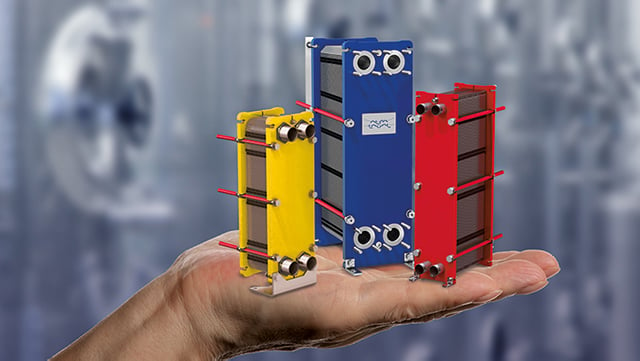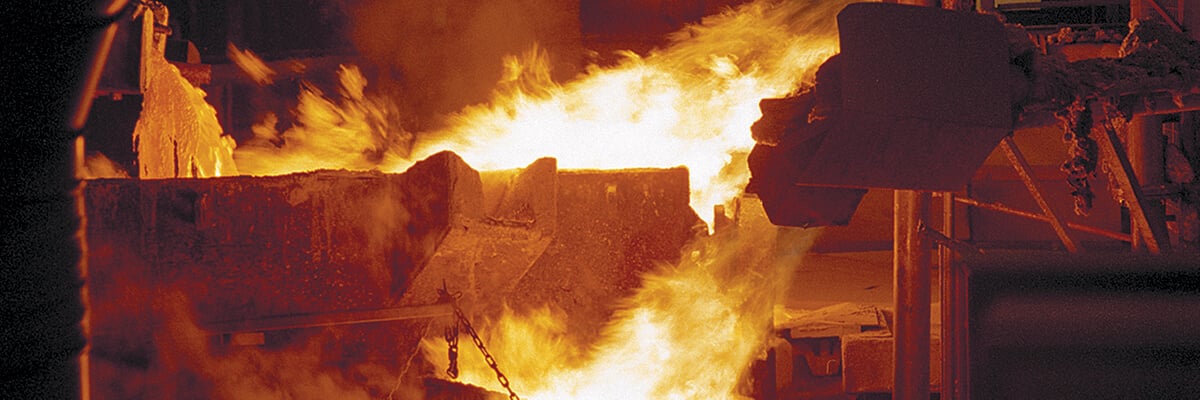Energy savings for cooling copper smelters
Rönnskär copper smelter signed a three-year Service Agreement with Alfa Laval resulting in saved plate heat exchanger energy costs, reduced water consumption and increased uptime.
DATE 2023-11-28In 2006, Boliden signed a three-year Alfa Laval Service Agreement. Their goal? To lower PHE energy costs by 15 to 20 percent, reduce water consumption and increase uptime at the Rönnskär smelter. On a daily basis, the Rönnskär smelter uses tons of brackish water from the Baltic Sea for plate heat exchangers that cool the various copper and zinc smelting processes at the company’s 1.5-square-kilometer facilities. Most heat exchangers are equipped with titanium plates to prevent corrosion since seawater is used.
To conserve natural resources and save money, the folks at Rönnskär were looking for smart ways to reduce water consumption, realize energy savings from reduced pumping costs and meet tougher environmental regulations. “For as long as I can remember, Alfa Laval has been a key business partner at Rönnskär,” says Anders Wikström, production engineer, energy department, who has worked at Boliden for 30 years. “We’ve talked to Alfa Laval for years about how to improve operations. Formalizing our partnership was the natural next step.”
Reducing water consumption and energy costs
Water management is a critical part of any smelting operations. Daily water consumption is high as are the associated pumping costs. By improving control over the amount of water pumped into the Rönnskär facility, Boliden hopes to realize significant energy cost savings. Reducing water consumption also improves the plant’s environmental performance since waste water contains heavy metals and needs chemical treatment.
“This is the second year of our partnership with Alfa Laval, so we don’t have any hard figures on cost savings yet. But since we pump a lot of water into our facilities, finetuning our PHE operations with routine cleaning is bound to have a positive impact on profitability.” - Anders Wikström, Production engineer, Boliden

Alfa Laval Service Agreement was the key
Through the Alfa Laval Service Agreement, Rönnskär relies on Alfa Laval to provide maximum uptime and minimum water and energy consumption by taking advantage of these Service Agreement services:
- Performance Audit – This service provides inside information on the actual operating conditions of Rönnskär’s PHEs. Using Alfa Laval software and PHE sensors, Alfa Laval measures heat transfer values and can predict exactly when maintenance is required to optimize performance.
The PHEs that used the most water were the first to receive Alfa Laval’s attention. When the indicator light shines red, cleaning is conducted in conjunction with the next minor work stoppage that is planned. Yellow means cleaning should be planned soon, and green means the PHE is operating as it should. Indicators signals when to schedule cleaning - Cleaning-in Place – Alfa Laval cleans Rönnskär’s PHEs based on the results of Alfa Laval Performance Audit. Using the right concentration of approved cleaning agents at right temperatures assures top PHE operation.
Wikström is satisfied with Alfa Laval’s Cleaning in Place services as well as the cleaning solutions used. He says that Alfa Laval cleaning solutions take care of the most common forms of copper and zinc fouling as well as problems caused by marine fouling, such as algae, in the cooling seawater. - Reconditioning and Repair – Alfa Laval also excels here according to Wikström. Alfa Laval replaces gaskets as required to restore optimal sealing function.
- Condition Audit – Alfa Laval provides audits and consulting services for optimized heat exchanger performance
Servicing all PHE brands
At Rönnskär, there are heat exchangers of different ages, brands and sizes. Some have well documented service histories while for others service records are non existent. Alfa Laval is gradually building a service history database covering all plate heat exchangers currently in operation.
“This process is a necessary measure to optimize PHE performance. We are initially focusing efforts on the processes where PHEs – whether they are ours or another manufacturer’s – use the most water. This approach promises to deliver real energy savings to Boliden. ” - Lars Nilsson, Sales Engineer, Alfa Laval Nordic

Win-win partnership
No matter what the challenge, Boliden is confident that its collaboration with Alfa Laval is a win-win situation that will lead to measurable energy savings and competitive advantage at the Rönnskär smelter facilities.
Over the years, Wikström has seen Alfa Laval develop increasingly more services directed at optimizing customers’ processes – and Boliden has benefited from these services. For instance, Alfa Laval identified PHEs that were oversized or undersized for a specific duty and offered tips on how to improve operations. Oversizing or undersizing PHEs directly affects water flow. Too low a flow has a negative impact on the unit’s cooling efficiency. Too high a flow increases pumping costs unnecessarily. By optimizing the flow, smelting processes are cooled efficiently without wasting energy.
“We have a solid business relationship with Alfa Laval. I can pick up the phone at any time and call Lars with any question,” says Wikström. “Plus we learn from each other all the time,” he adds with a smile.
Since we pump a lot of water into our facilities, fine-tuning our PHE operations with routine cleaning is bound to have a positive impact on profitability" ANDERS WIKSTRÖM, PRODUCTION ENGINEER, BOLIDEN
The customer
The Boliden-owned Rönnskär smelter at Skelleftehamn on the Baltic Sea is one of the world’s most efficient copper producers. Here, hundreds of Alfa Laval and other manufacturer’s plate heat exchangers are at work to cool various copper and zinc smelting processes. Most heat exchangers are equipped with titanium plates to prevent corrosion since seawater is used.
Benefits
- Reduced water consumption
- Lower energy costs
- Improved environmental performance
- Higher productivity due to more uptime, less downtime
- Longer plate heat exchanger lifetime

